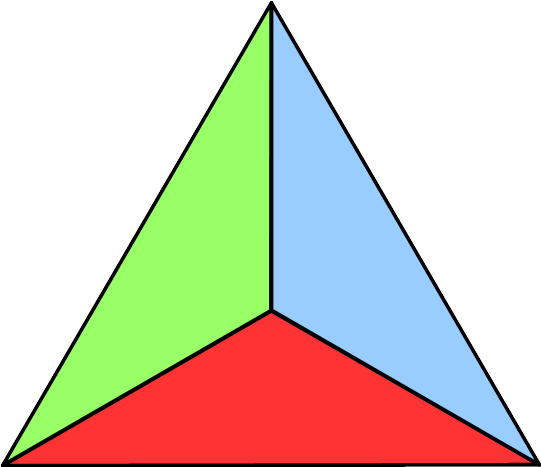Course Outline

"This course gave me valuable insight into key
PMBOK areas that
I haven't considered since
I received my PMP certification
in 2012. Great course!" – Dan Bischoff
The course is end-to-end and comprehensive. First an overview is provided of all the fundamental concepts. Then the role of the Project Manager and the keys to team management are described. Then the PM processes are mapped across the project time-line, and the specific actions you need to take at each step are explained in an easy to follow thread. The use of software tools to support the PM process is explained. The course is simple, practical, and complete, providing everything you need to become an expert, practical project manager.
A more detailed listing is provided below. The live group courses cover the most important concepts in the time available, with an emphasis on any topics requested by the attendees. All attendees of both the group and individual self-paced courses receive lifetime access to the full 200 video library including in-depth coverage of all of the topics listed below.
1. Project Management Overview
Project Management Basics
- What Is Project Management?
- Who Can Use Project Management?
- Application To Small Projects
- Where Projects Come From
- Why Processes Are Useful
The Project Management Institute Framework
- The Project Management Institute
- PMP & CAPM Certifications
- Project Definition
- Program Definition
- The Five PM Stages
- The PM Knowledge Areas
- Project Players
Techniques & Tools
- Two Basic Project Management Techniques
- Project Management Tools
Strategic Plan
- The Link To The Strategic Plan
Triple Constraint
Keys To Success
- The Standish Group Chaos Report
- The Top 3 Drivers Of Project Success
The Project Manager
- The Role Of The Project Manager
- Project Manager Requirements
- Communications Essentials
- Team Formation
- Team Foundations
- Team Dynamics
- Negotiation Essentials
- Leadership Essentials
Chapter Summary
2. Initiation
Introduction
- The Purpose Of Initiation
- The Project Manager Role
Sponsor & Customer
Stakeholders
- The Project Stakeholders
- Stakeholder Analysis
Scope
- The Project Objective
- Objective Process
- Assumptions & Constraints
- The Conceptual Solution
Business Case
- The Business Case
- The Benefit Cost Ratio (BCR)
- Example – Business Case BCR & ROI
Project Manager & Mandate
- The Project Manager & Mandate
Charter
Chapter Summary
3. Planning
Introduction
- The Purpose Of Planning
- Planning Process Flowchart
- The Core Project Team
Requirements
- From Objective To Requirements
- Requirements – A Long Time Challenge
- Example – Health System
- Importance Of Requirements
- Gathering Requirements
- Requirements Attributes
- Requirements Key Points
- Requirements Document & Approval
- Example – Buying Chairs
Solution
Deliverables
- The Work Breakdown Structure (WBS)
- Example – An Aircraft
- Example – Shed
- Example – Supper
- Example – Standards Development
- Example – Process Improvement
- WBS Process
- WBS Key Points
- WBS Hierarchical Decomposition
- WBS Phasing & Combined Methods
- Example – Hierarchical Decomposition
- Example – Project Phasing
- Breaking Down By Responsibility
- Breaking Out Waiting Time
- Breaking Out Interim Deliveries
- Breaking Down By Duration
- Relationship Of WBS & Requirements
- The WBS Dictionary
- Deliverables - Work Packages - Activities
- WBS Drawing Tools
Logic
- The Precedence Diagram
- Kinds of Precedence Links
- Leads & Lags
- Example – Generic
- Example – Shed
- Example – Supper
- Example – Standards Development
- Example – Process Improvement
- Precedence Diagram Process
- Precedence Diagram Patterns
- Precedence Diagram Tools
Estimating
- Estimating Methods
- The Statistical Power Of Multiple Estimates
- Activity Breakdown
- Fine Tuning
- Factoring For Productivity & Availability
- An Estimating Spreadsheet
- PERT & Straight 3-Point Techniques
- Example – PERT & 3-Point
- The Delphi Technique
- Handling Estimating Error
Schedule
- The Gantt Chart
- Example – Gantt Chart
- Gantt Chart With Work Packages
- Gantt Chart With Activities
- The Critical Path
- Critical Path Process
- Example – Critical Path Process
- Example – Forward Pass
- Example – Backward Pass
- Example – Critical Path With Float
- The Schedule Milestones
Resources
- Resource Leveling
- Resource Planning
Cost
- Estimating Cost
- Cost Breakdown
- Cost Accounts
- The Project Cost Baseline
Procurement
- Deciding To Build Or Buy
- Procurement Documents
- Contract Types
- Selecting The Winner
Risks
- Risk Management
- Risk Management Process
- Risk Management Planning
- Risk Identification
- Standard Risk Statement Form
- Risk Qualification
- Risk Quantification
- Risk Response Planning
- Other Risk Elements
- The Risk Register
- Critical Chain Management
- Risk Buffer Allocation
- Risk Reserve & Management Reserve
- Opportunity Risks
- Opportunity Planning
Communications
Project Management Plan
- The Project Management Plan
- Final Project Plan Review
Chapter Summary
4. Execution
Introduction
Project Team
- Building The Project Team
- Project Team Key Points
- Functional Organizations
- Projectized Organizations
- Matrix Organizations
- Management Of Matrix Organizations
- Matrix Personnel Allocation
- Delegation
- Team Motivation
- Managing People Conflict
Communications
First Steps
- Kickoff Meetings
- Project Requirements Review (PRR)
Design & Build
Problem Identification
Chapter Summary
5. Monitoring & Control
Introduction
- The Purpose Of Monitoring And Control
- Managing Expectations
Weekly Heartbeat
- The Weekly Status Meeting
Scope
- Managing Scope Change
- Change Impact Analysis
- Change Approval
Time
- Schedule Statusing
- Managing Schedule
- Crashing & Fast-Tracking
Cost
- Cost Statusing
- Managing Cost
Risk
Earned Value Management (EVM)
- EVM Overview
- EVM Metrics
- EVM Cost Projections
- EVM Schedule Projections
- EVM Meaning
- Example – EVM
Quality
- Managing Quality
- Peer Reviews
- User Reviews
- User Review Management Tool
Problem Resolution
- Solution Options
- Persuasion Techniques
Monthly Heartbeat
- Monthly Project Statusing
- One Page Monthly Report
- The Monthly Review
Chapter Summary
6. Closing
Introduction
Procurement
Acceptance
- Change Management
- Scope Verification
- Scenario Based Scope Verification
- Practical Delivery Criteria
- Transition To Operations
Lessons Learned
- The Lessons Learned Process
Team Closure
- People Transition
- The Project Celebration
Final Report
Chapter Summary |

